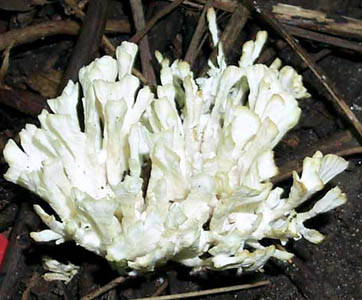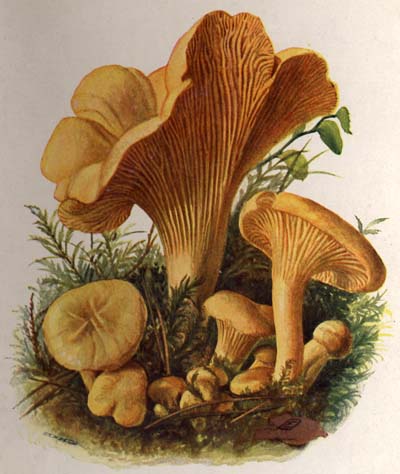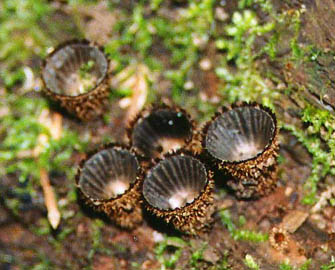|

Meeting Location: North Park Village Nature Center 5801 N. Pulaski, Chicago, IL |

Italian Mushroom Club |
|

|

THE ILLINOIS MYCOLOGICAL ASSOCIATION MEMBERSHIP RENEWAL FORM |
|

| Sunday, Sept. 30 at 10:00 AM | Kettle Moraine South (Wisconsin) - joint foray IMA & WMS. See directions in the last issue. Central Wisconsin got a lot of moisture lately! |
| Friday, Oct. 12 at 12:00 noon | Schiller Woods (Directions & map below) Collecting for next days microscopic class. |
| Saturday, Oct. 27 at 9:00 AM | Bachelor Grove (see page 3 for directions and map) |
| Saturday, Nov. 10 at 10:00 AM | Moraine Hills State Park (see page 3 for directions and map) Help us check out this new location! The far north and westside IMAers deserve one foray in “their-neck-of-the-woods”, no??! |
Schiller Woods Foray |


McCrone Research Institute Meeting Directions |


Bachelor Grove Foray |

Moraine Hills Foray |

IMA Potluck Cook Off October 13th - New Date! |

|
|

|
|
|

|

|

|
|

|

|
|

Deer Grove Species: ASCOMYCOTA (6) |
|

Deer Grove Species: BASIDIOMYCOTA - - Gilled mushrooms and boletes (54) |
|
|

|

|

|

|

|

|
|

|

Deer Grove Species: BASIDIOMYCOTA - - Polypores, teeth fungi, and crust fungi (33) |
|
|

|

|
|
Chanterelles and Coral fungi (1) |
|

Puffballs and other gasteromycetes (8) |
|

Jelly fungi (2) |
|

ZYGOMYCOTA (1) |
|


|



|

|

| Sat, Sept. 15, 9:00 AM | Deer Grove, We will be picking fresh specimens for the IMA mushroom exhibit the next day (Sept. 16) at the Botanic Gardens...so come out in force, and let’s get a lot! |
| Sun, Sept. 30, 10:00 AM | Kettle Moraine South (Wisconsin) - joint foray IMA & WMS See page 3 for map and details. |
Foray Report: Kankakee State Park, July 29, 2001 |
|

|

|

On finding a mushroom... |

|

|

|

|

|

|

| Sun. July 29, 10:00 AM | Notice of change of location for the next foray. The Indiana Dunes foray originally scheduled for July 29th has been moved to the main entrance of Kankakee State Park on the same date. It was felt that due to dry conditions at this point in time, Kankakee would meet with more success. Of course, this should bring cloud bursts to the Dunes area. Map and details page 3 |
| Sat. Aug 18, 9:00 AM | Greene Valley Forest Preserve, map and details page 8 |
| Sat. Sept. 1, 9:00 AM | Bemis Woods, map and details page 10 |
|

|

|

Redstone Heights: |
|

Hemlock County Park: |
|

Next Meeting |

Parking Directions: |


The Tasty |
|

|

|

The Colorful |
|

The Rare |
|

|
Saturday, Apr 28, 2001 Kankakee foray report |
|

Busse Woods/ Kankakee, July 14, 2001, Foray Report |
|

Newly designed “T” shirts go on sale |

|

| Sat., June 9 10:00 AM | Tinley Creek Woods (southern suburbs) See page 3 for directions. |
| Sun., June 24 10:00 AM | Beck Lake - (far northern suburbs) See page 3 for directions. |
| July 5 to July 8 | NAMA ‘01 in Minnesota. |
| Sat., July 14 10:00 AM | Bussy Woods - (northwest suburbs). |
| Sun, July 29 10:00 AM | Indiana Dunes (Indiana). |
May 7 Club meeting provides info on morel hot spots: |
|

|

it was spotted huddled under a tree by Peter Margulis (and well-camouflaged he was, too, with his dark-gray coat! No wonder Peter found so many more morels than me!), coaxed out of hiding by Leon Shernoff, dubbed “Puffball” by John Denk, and photographed (trying to hide in my elbow while I try to identify the picnic table of mushrooms off to one side) by Dennis Bukala. Connie Fischbein identified the cat as a “Russian Blue”, about 6 months old, and a male. A team effort, and one that we’re all happy with!
Directions to Tinley Creek Woods |
|

Directions to Beck Lake Foray site |
|

| Sat., May 5 | Morel Madness @ Magnolia, IL |
Sun., May 6 | Little Red Schoolhouse (see last newsletter for map and directions) |
Sat., May 12 | North side of Chicago |
Sat., May 12 | Wisconsin Mycological Society Foray (details below) |
Fri., May 18-20 | 2nd annual IMA Wisconsin Dells Morel Weekend Getaway (see page 3 for details) courtesy of Allan Lawrence, Wisconsin Myco. Society |
Next IMA meeting, Monday, May 7, 7:30 PM, North Park Village Nature Center |

| Common Name | Scientific Name | Other species | Special habitat | |
Week 1 | Scarlet Cup Black Tulip | Sarcoscypha coccinea Urnula Craterium | S. occidentalis | Everywhere |
Week 2 | False Morels Early Morels | Gyromitra esculenta Gyromitra infula Verpa bohemica | G. fastigiata V. conica | G. esculenta: pines V. conica: apples |
Phase 3 | ½-Free Morels | Morchella semilibera | tulip poplars | |
Phase 4 | Black Morels | Morchella elata | M. conica M. angusticeps | burnt ground, pines, tulip poplars |
Phase 5 | Yellow Morels (White Morels) | Morchella deliciosa | M. esculenta M. crassipes | old/dying elms and apples; tulip poplars |
IMA Loses a Friend |
|

|

... have been suggested to form a natural group due to the shared presence of a cellular cuticle, a layer of spherical cells that forms the outermost tissue in the cap or pileus of the mushroom fruit bodies (Singer, 1986). On the other hand, the Strophariaceae and the Agaricaceae possess a filamentous cuticle wherein the outermost layer of cells is formed of filamentous hyphae that are oriented in a radial manner outward from the stalk or stipe. (Hopple & Vilgalys, p.2)
|

|
|

|

Polyporus squamosus |
|
Flammulina velutipes |
|

False Morels |
|

|

|

Urnula craterium |
|

Polyporus arcularius |
|

|
Upcoming Meetings: |
|

|
|
|

|

|
|

|




The sister group of the euagarics in all [well-formed] trees is the Boletales clade (Boletus, Paxillus, and Scleroderma), but... [the details of this are] not resolved with confidence, and the evolutionary precursor of the gills of euagarics therefore remains unclear. Even if monophyly of the euagarics plus the Boletales was strongly supported, however, the... [“essential”] morphology of the Boletales is unresolved. In our study, the Boletales were represented by poroid, gilled, and puffball forms. This is consistent with the findings of Bruns and colleagues, who also have shown that the Boletales includes false truffles and resupinate forms. The closest relatives of the other lineages of gilled mushrooms [(those labeled L and P in the chart)] in our analysis are various nongilled Hymenomycetes. For example, the gilled mushroom Lentinus tigrinus is nested in a clade of polypores whereas the closest relatives of the gilled mushrooms Lentinellus omphalodes and L. ursinus are a coral fungus and a toothed fungus. These results indicate that gilled mushrooms have been derived from morphologically diverse precursors. (p.12003)

|
|

|

|

|

|

|

|

|

there is a naturally occurring developmental mutant in which a recessive allele at a single locus confers a Gasteromycete-like enclosed hymenophore. Although the genetic basis of gasteromycetization in other lineages is unknown, the situation in L. tigrinus suggests that such transformations could be mediated by one or a small number of mutations in genes that have large phenotypic effects.
|

a) A gilled mushroom develops secotioid forms, perhaps in response to changes in climate.
b) The secotioid forms then lose their gills (or pores, in the case of Gasteroboletus), becoming Tulostomatales.
c) The climate becomes temperate again, and the Tulostomatales lose their stalk, becoming “normal” puffballs.
|

|
|

|

 Glossary |  Mushrooms |  |  People |  Newsletter |  Events |